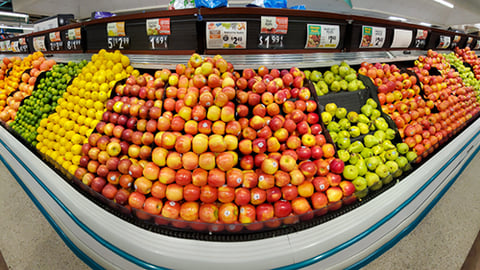Food Industry Reacts to Government’s Synthetic Dye Ban
The U.S. Food and Drug Administration (FDA), under the guidance of U.S. Health and Human Services Secretary Robert F. Kennedy Jr., made a big move this week, announcing steps to phase out all petroleum-based synthetic dyes from the food supply. The agency set a timeline for switching over to natural alternatives.
In its announcement, the FDA shared that it is starting the process to revoke authorization for two dyes, Citrus Red No. 2 and Orange, in the coming months. The group emphasized that it will work with food industry partners to transition away from the other six synthetic dyes by the end of next year.
Kennedy, a firebrand known for his independent run for president and his “Make America Healthy Again” platform under the current administration, said that the transition to natural colorings is overdue. “For too long, some food producers have been feeding Americans petroleum-based chemicals without their knowledge or consent,” he declared. “These poisonous compounds offer no nutritional benefit and pose real, measurable dangers to our children’s health and development. That era is coming to an end. We’re restoring gold-standard science, applying common sense, and beginning to earn back the public’s trust. And we’re doing it by working with industry to get these toxic dyes out of the foods our families eat every day.”
[RELATED: FDA Bans Red Dye No. 3 in Food Products]
In a news conference, Sec. Kennedy was asked if food industry leaders, several of whom he has met with in his early tenure, have agreed to the changes. “We don't have an agreement – we have an understanding,” he replied.
As it seeks to yank petroleum-based synthetic colors from production, the FDA is authorizing the use of four new natural color additives in the coming weeks and encouraging the development of others. In addition, the agency disclosed that it will work with the National Institutes of Health (NIH) on more research on how food additives affect health, especially among children.
Reaction in the food industry was swift following the announcement on Earth Day, April 22. “While there is lack of scientific consensus to support such a move – food dyes are generally considered low risk for the broad population, dependent on dietary and consumption patterns – additional research is needed to better understand the impact of artificial food dyes on specific subgroups, including various life stages including pregnancy, birth to 24 months, and aging,” said Bryan Hitchcock, chief science and technology officer at the Institute of Food Technologists (IFT). “It is important to have a clear regulatory framework at the national level, and it is clear the FDA is elevating their engagement at a fast pace to, in part, satisfy consumer desire for a healthier food system. Leveraging science to understand complex and nuanced issues must play a prominent role in creating that healthier food framework.”
He added that IFT’s upcoming IFT FIRST event is such a forum, and stakeholders will use that opportunity to talk about how they intend to reformulate food products that require alternative ingredient solutions.
Melissa Hockstad, president of the Consumer Brands Association (CBA), said that the group’s members will work with the federal government on the use of synthetic dyes, after manufacturers have been dealing with various state laws for several years. "Consumer Brands has long asked HHS and FDA to reestablish themselves as the country's leading regulatory authority and we appreciate that the administration has reasserted their leadership in response to the myriad of state activity in the food regulation space," she said.
The Center for Science in the Public Interest (CSPI), a vocal group in the industry for decades, also weighed in on the matter, noting that the move didn’t go far enough, in its opinion. “It’s disappointing that Secretary Kennedy and Commissioner Makary would hold a press conference to announce the elimination of food dyes — only for reporters to learn that the only real regulatory moves here are to move to ban two rarely used dyes, Citrus Red 2 and Orange B, “within the coming months,” said CSPI President Dr. Peter G. Lurie. “They announced no rulemaking of any sort to remove the remaining six numbered dyes. Instead, we are told that the administration has an unspecified ‘understanding’ with some unspecified fraction of the food industry to eliminate dyes. We wish Kennedy and Makary well getting these unnecessary and harmful dyes out of the food supply and hope they succeed.”
Category trade groups also responded to the news. “FDA and regulatory bodies around the world have deemed our products and ingredients safe, and we look forward to working with the Trump Administration and Congress on this issue. We are in firm agreement that science-based evaluation of food additives will help eliminate consumer confusion and rebuild trust in our national food safety system. We follow and will continue to follow regulatory guidance from the authorities in this space, because consumer safety is our chief responsibility and priority,” declared the National Confectioners Association in a statement.






